Knowing how to line a fishing rod is a fundamental skill every angler must master. Whether you’re just starting out or upgrading your gear, properly threading line onto your reel ensures better casting, stronger hook sets, and fewer tangles. Without the right setup, even the best rod and reel combo can underperform.
Moreover, learning how to line a fishing rod gives you control over your equipment. You choose the type of line, its strength, and how it’s secured. This customization improves performance based on your target fish and environment. For example, bass fishing requires different line than trout or saltwater species.
The process involves several key steps. First, you pick the right fishing line—monofilament, fluorocarbon, or braided. Each has pros and cons. Then, you attach it to the reel using a strong knot like the arbor knot or uni knot. After that, you wind the line evenly across the spool. Finally, you tie on a leader or lure and test the setup.
In addition, maintaining your line matters. Over time, sun exposure, abrasion, and memory degrade performance. Re-lining once or twice a year keeps your gear in top shape. It also prevents break-offs during critical moments.
Different reels require slightly different techniques. Spinning reels are most common. Baitcasting and spinning reels each have unique winding needs. Understanding these differences helps avoid mistakes.
As we explore further, you’ll learn about line types, tools needed, step-by-step instructions, and expert tips. Most importantly, you’ll gain confidence in knowing exactly how to line a fishing rod correctly every time.
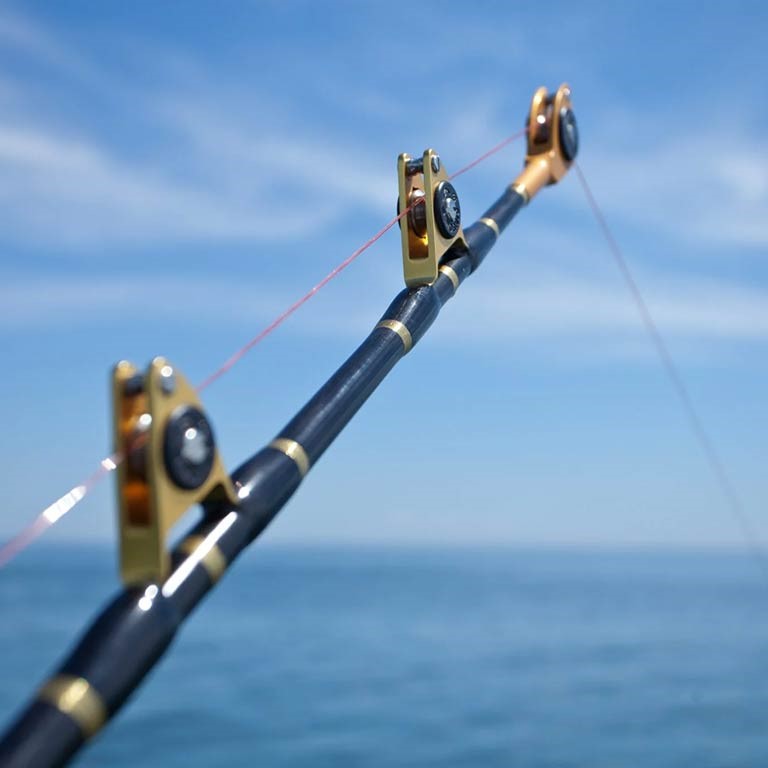 Choosing the Right Fishing Line
Choosing the Right Fishing Line
Selecting the correct fishing line is essential for successful fishing. The right line impacts casting, bait presentation, and hooking fish effectively. Your fishing technique, the type of fish targeted, and the environment dictate your choices. Here’s how to decide:
Types of Fishing Lines and Their Uses
- Monofilament Lines: Affordable and versatile. They work well for beginners and general fishing.
- Fluorocarbon Lines: Invisible underwater, ideal for clear water. This line is abrasion-resistant and sinks.
- Braided Lines: Strong and durable. Perfect for heavy cover and large fish. It’s ideal for tough conditions.
- Fly Fishing Lines: Specially made for fly fishing. It allows precise casting of lightweight flies.
- Ice Fishing Lines: Designed to withstand freezing temperatures. They’re great for winter fishing trips.
Key Factors to Consider When Selecting a Fishing Line
- Strength: Match the line strength to the target fish size and species.
- Visibility: Choose low-visibility lines for wary fish or clear waters.
- Stretch: Consider stretch properties for shock absorption and hook-setting strength.
- Diameter: Thinner lines cast farther but may be less durable.
- Fishing Location: Adapt the line type to freshwater, saltwater, or icy conditions.
- Durability: Opt for abrasion-resistant lines when fishing around rocks or debris.
Choosing a fishing line wisely enhances your chances of success on the water. Combine knowledge with practice to maximize results.
Preparing the Fishing Rod and Reel
Before learning how to line a fishing rod, prepare your rod and reel. Proper preparation ensures smooth operation and prevents issues during fishing. This step is crucial for avoiding tangles and achieving efficient casting.
Inspecting Your Rod and Reel
Inspect your fishing rod for any cracks, bends, or damage. Examine the rod guides for sharp edges or rust, as these can weaken the fishing line. Check the reel to ensure the drag system works and the handle turns smoothly. A clean and properly functioning rod and reel set the stage for effective line installation.
Prepping Your Reel for Line Installation
Start by opening your reel’s bail if it’s a spinning reel. If using a baitcasting reel, ensure the spool is accessible and clean. Remove any old fishing line to avoid tangles with the new one. Clean the reel with a cloth to remove dirt or debris. A well-prepared reel makes the process of lining a fishing rod easier and more straightforward.
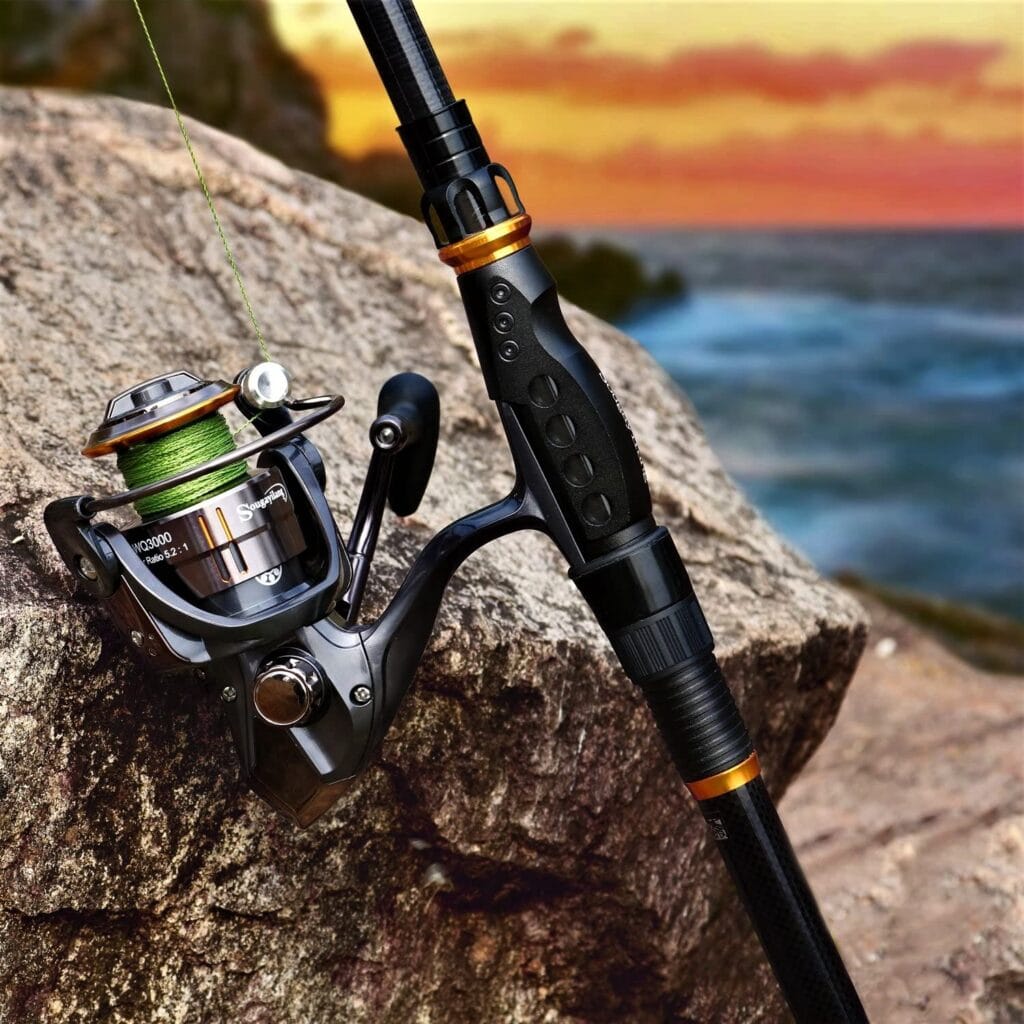 Attaching the Fishing Line to the Reel
Attaching the Fishing Line to the Reel
Properly attaching the fishing line to the reel is essential for effective fishing. It ensures that the line stays secure during casting and reeling. Follow these steps to attach your fishing line like a pro.
How to Tie a Secure Knot to the Reel
- Start with the Arbor Knot: This is the most common knot for securing the line.
- Wrap the fishing line around the spool of the reel.
- Tie an overhand knot around the mainline to create a loop.
- Tie a second overhand knot at the tag end.
- Pull both knots tight until they secure the line to the spool.
- Trim Excess Line: Use scissors or nail clippers to cut off any extra line from the knot.
- Check Knot Security: Tug lightly on the line to ensure the knot won’t slip.
A strong knot ensures the line doesn’t loosen under pressure. Take your time to tie it carefully.
Ensuring Proper Line Attachment
- Position Your Reel Correctly: Lay the reel flat or hold it steady to avoid loose winding.
- Secure the Bail or Line Guide: Close the bail arm on spinning reels or ensure the baitcaster spool is locked.
- Wind the Line Smoothly: Start cranking the reel handle to wind the line evenly onto the spool.
- Keep a consistent tension by pinching the line lightly between your fingers.
- Check for loops or twists as you wind the line.
- Avoid Line Twists: Let the spool rotate naturally to prevent unnecessary tangles.
Following these steps ensures a smooth and sturdy connection. Proper attachment helps avoid casting issues and improves fishing efficiency.
Spooling the Fishing Line Onto the Reel
Spooling the fishing line onto the reel correctly ensures smooth casting and reeling. Mastering this step enhances performance.
Techniques for Proper Spooling
- Secure the Line Before Spooling: Start by attaching the line to the reel with a solid knot. Ensure your knot is tight and doesn’t slip.
- Align the Spool Properly: Place the fishing line spool flat so it unwinds smoothly during transfer. For baitcasting reels, ensure the spool rotates freely.
- Keep Tension Consistent: Pinch the line lightly between your fingers as you spool it onto the reel. This prevents loose loops.
- Crank the Reel Handle Smoothly: Turn the handle evenly to wind the line without tangles or twists. Pause often to confirm line placement.
- Fill the Spool Appropriately: Stop spooling when the line reaches around 1/8 inch from the spool’s edge. Overfilling can lead to tangles; underfilling impacts casting distance.
Avoiding Overly Tight or Loose Line
- Monitor Tension Regularly: Check that the line feels firm but isn’t stretched too tightly.
- Inspect for Twists: Stop and fix any loops or twists that might form during spooling.
- Avoid Uneven Winding: Ensure the line spreads evenly across the reel spool. Adjust your technique if the line piles on one side.
- Test Reel Smoothness After Spooling: Spin the reel handle without force and verify the line flows freely. Proper tension and smooth winding enhance casting performance and reel durability.
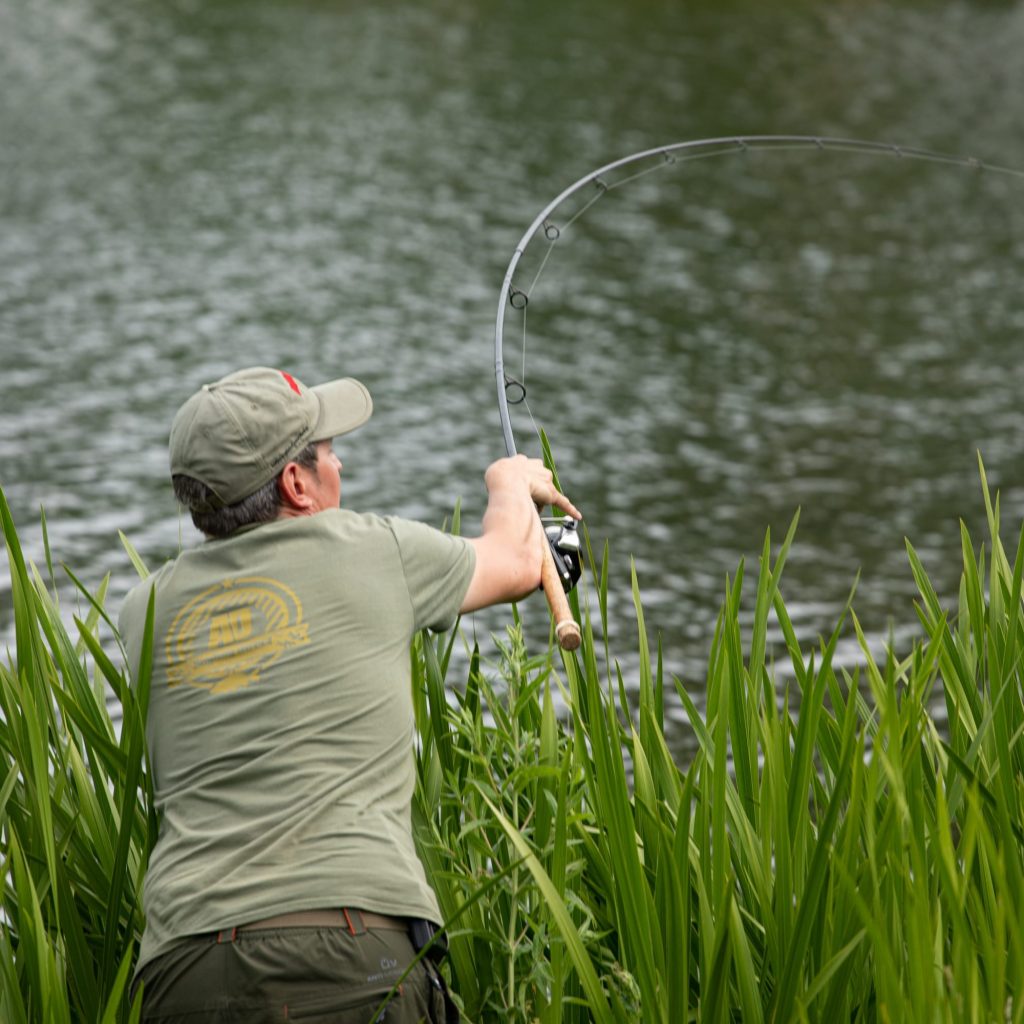 Configuring Line Guides and Rod Setup
Configuring Line Guides and Rod Setup
Properly configuring your fishing rod and line guides ensures smooth operation during casting and reeling. This step focuses on threading the fishing line through the rod guides and ensuring everything works efficiently.
Threading the Line Through Fishing Rod Guides
- Start at the Reel: Begin threading from the reel’s spool, ensuring the line is untangled.
- Insert Through First Guide: Pass the line through the guide closest to the reel. This is called the butt guide.
- Follow the Guide Sequence: Continue threading the line through each rod guide in sequential order, moving toward the rod tip.
- Check Line Position: Make sure the line is centered inside each guide for smooth movement during reeling.
- Reach the Tip Guide: Complete threading by passing the line through the last guide at the rod’s tip.
- Avoid Overlapping: Ensure the line doesn’t cross itself within any guide. This prevents tangles and uneven movement.
Threading the line properly is crucial for efficient casting and preventing unnecessary friction.
Double-Checking Guides for Efficiency
- Inspect for Damage: Carefully check all guides for cracks, rust, or sharp edges that may fray the line.
- Ensure Even Alignment: Verify that the guides are aligned straight along the rod. Misaligned guides impact performance.
- Test Line Flow: Slowly pull the line through the threaded guides to confirm smooth and effortless movement.
- Secure the Line: Tie a temporary knot or attach a swivel at the line’s end to avoid unthreading.
- Recheck Tension: Confirm the line maintains gentle tension across all guides without sagging or being stretched tight.
Thoroughly checking the guides ensures your rod setup is primed for success and minimizes casting issues.
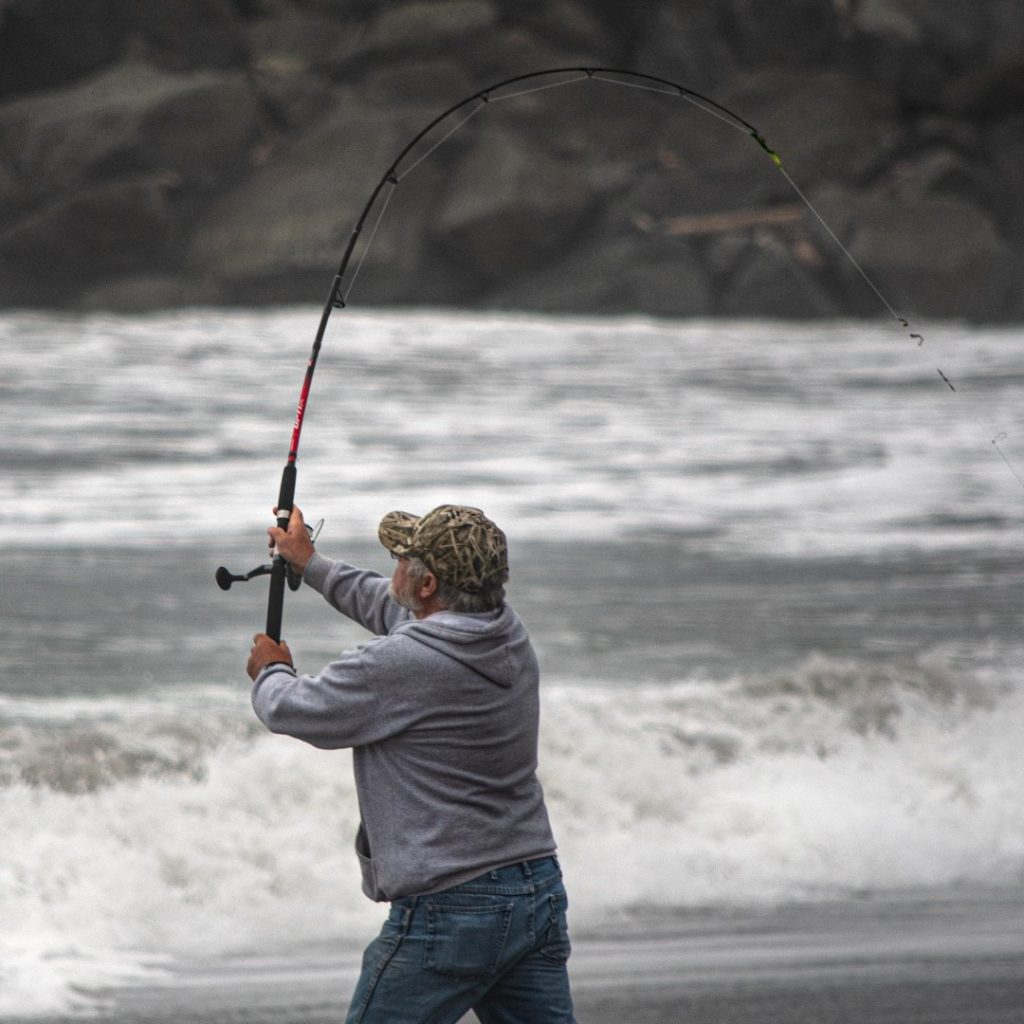 Final Adjustments and Testing
Final Adjustments and Testing
After threading and configuring your fishing rod, final adjustments ensure proper functionality. Testing confirms your setup works correctly for an enjoyable fishing experience.
Ensuring Line Tension and Smooth Operation
- Check Line Tension Across Guides: Pull the fishing line manually to confirm even tension through all rod guides.
- Adjust Reel Drag: Set the reel’s drag system based on the strength and size of your fishing line.
- Inspect Spool Filling: Verify that the spool is filled appropriately, without overfilling or uneven winding.
- Test Reel Movement: Turn the reel handle to assess smooth line release and retrieval without resistance.
- Eliminate Twists or Slacks: Fix any twists or loose areas on the line to avoid casting problems.
Proper tension ensures efficient casting and prevents line issues while fishing. Double-check every part for accuracy.
Testing the Setup for Fishing Readiness
- Simulate Casting Motion: Practice casting without bait to confirm smooth line flow through guides and reel.
- Inspect Line and Knot Security: Check the knot at the reel and ensure the line won’t slip under pressure.
- Evaluate Drag Functionality: Pull the line gently to see if the drag system adds resistance appropriately.
- Check for Unexpected Snags: Release and retrieve the line to detect any irregularities in movement or tension.
- Attach a Practice Weight or Lure: Use a small weight to test the rod’s balance and casting accuracy.
Testing prevents issues on the water and ensures your fishing rod performs optimally. Make adjustments as needed for success during your fishing trip.
Tips for Different Reel Types When Lining a Fishing Rod
Spinning reels are the most common. To line one, open the bail. Attach the line with an arbor knot. Hold tension and reel slowly. Distribute line side to side.
Baitcasting reels require more precision. Close the brake system first. Attach line to the spool. Use a knot that won’t slip. Reel under moderate thumb pressure. Prevent overrun.
Spincast reels are simpler. Remove the front cover. Tie line to the spool. Wind manually or with a drill adapter. Fill to the mark.
Fly reels use backing first. Tie Dacron to the spool. Wind tightly. Add fly line on top. Finish with leader material.
Centerpin and multiplier reels need special attention. Follow manufacturer steps closely. These are less common but still used.
Always match line size to reel capacity. Check labels for max yardage.
Practice makes perfect. Try on old gear before heading out.
Knowing how to line a fishing rod for each reel type boosts success.
Frequently Asked Questions About How to Line a Fishing Rod
Do I need to wet monofilament before spooling?
No. Modern lines don’t require soaking. Fluorocarbon benefits slightly, but not required.
Can I use braid on a spinning reel?
Yes. Most modern reels support braid. Use a mono backing if needed.
How tight should I wind the line?
Apply light, steady pressure. Not too hard. Let it lay smoothly.
What if my line twists while spooling?
Let the line spool spin freely. Do not force it. Use a pencil to allow rotation.
Should I fill the spool completely?
No. Leave 1/8 inch of space. Prevents line jump and tangles.
How do I know when to re-line?
If line looks faded, feels brittle, or has memory. Replace annually.
Can I mix line types?
Yes. Many use braid mainline with fluorocarbon leader. Connect with a double uni knot.
Is there a difference between left and right-hand reels?
Only in retrieve direction. The lining process is the same.
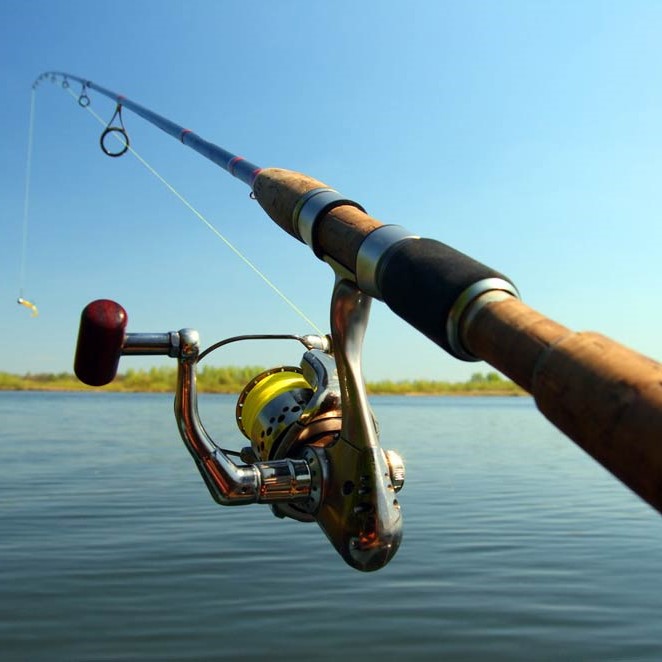 Final Thoughts
Final Thoughts
Learning how to line a fishing rod is one of the most valuable skills an angler can develop. It ensures your gear performs at its peak. It reduces failures and increases catch rates. From choosing the right line to applying it correctly, every step matters.
Furthermore, regular maintenance keeps your investment protected. Fresh line, proper knots, and even winding make a real difference. Whether fishing for fun or competition, preparation counts.
With practice, the process becomes quick and routine. You’ll spend less time fixing issues and more time enjoying the water.
So take the time to master this essential task. Gather your tools. Follow the steps. Avoid common errors.
Because nothing ruins a great day of fishing faster than a broken line. And nothing builds confidence like knowing exactly how to line a fishing rod the right way.